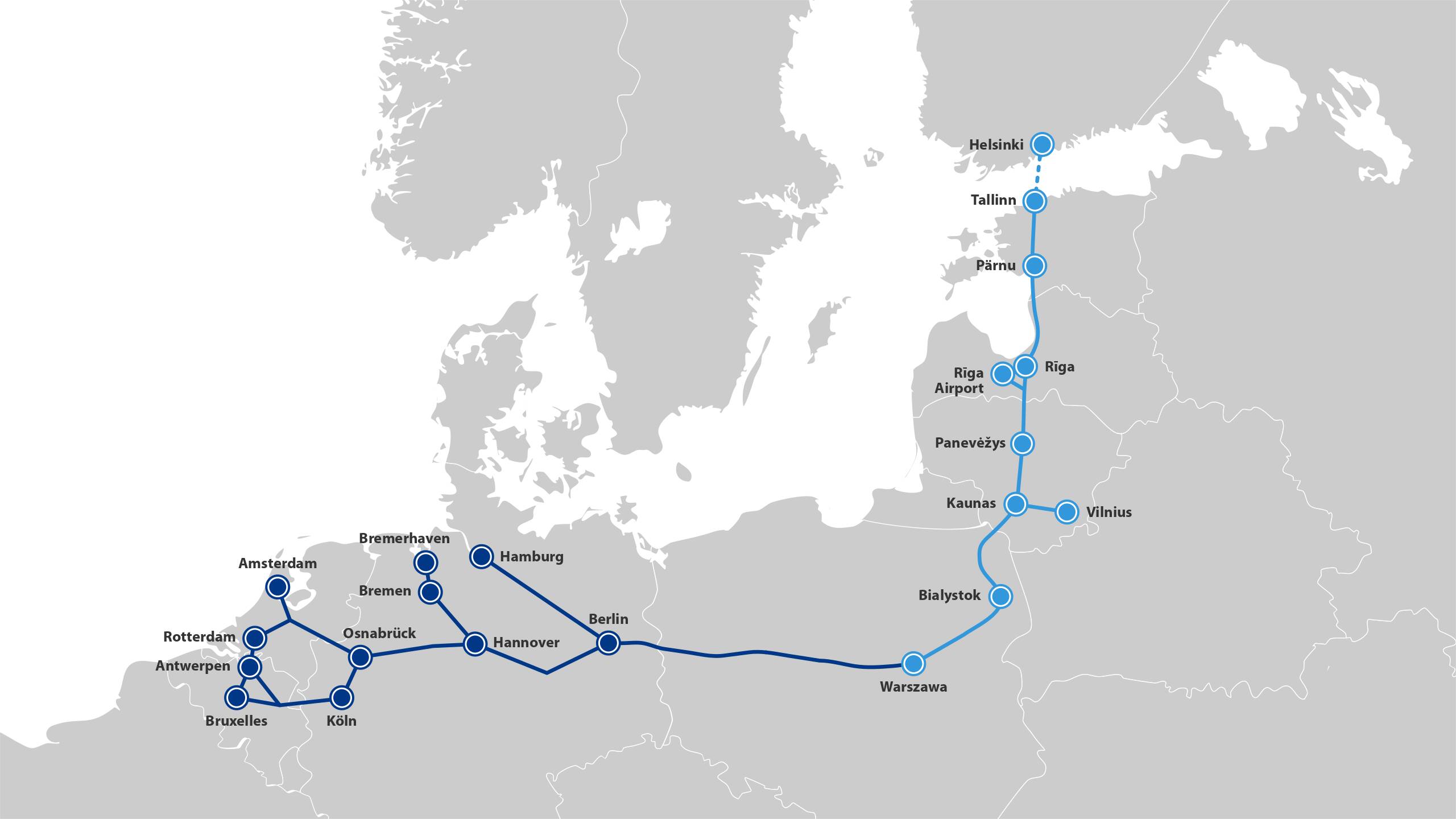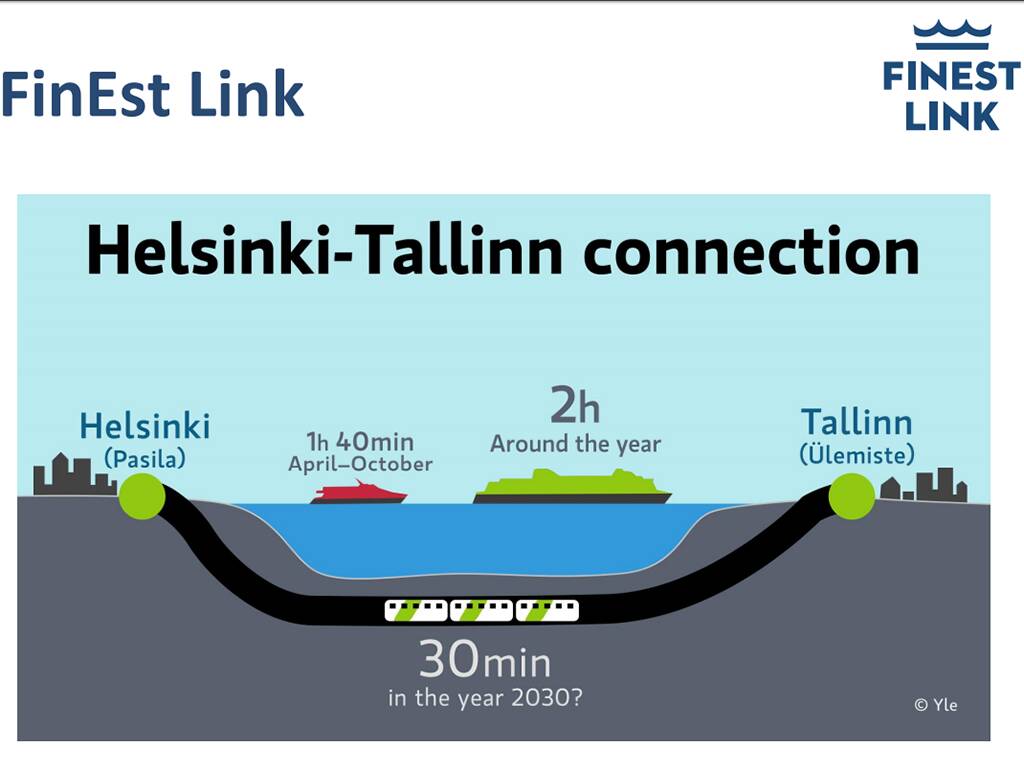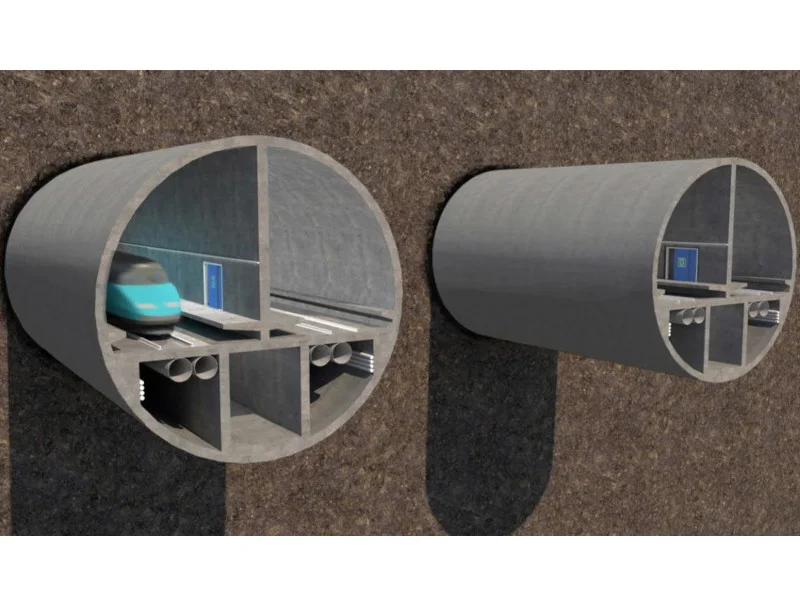An underwater railway between Helsinki and Tallinn? Yes, but if the Chinese don’t do it…

Finnish entrepreneurs would like to entrust China with the construction of an incredible 100 km long tunnel under the Gulf of Finland, which would connect the Finnish capital with the Estonian capital, Tallinn, reducing travel times from 2 hours by ferry, at least, to 20 minutes of high speed train. A remarkable feat, from an engineering point of view.
The project has been underway for years, with delays and controversies over the alleged involvement of Chinese money and know-how, and feasibility studies date back to 2017 . But even as the mood towards China in both Finland and Estonia has soured, the company's founders intend to remain true to their ideas.
“For the actual construction, we have of course not made any final decisions, but we look very favorably on Chinese construction companies,” said Kustaa Valtonen, founding partner of Finest Bay Area Development Ltd, the project sponsor.
“At the moment, the Chinese are ahead of the high-speed rail game for a long, long, long time,” he added.
Valtonen has been talking for "a long time" with China Railway Engineering Corporation, the state enterprise that built the high-speed line connecting the Winter Olympic Games sites in Beijing and Zhangjiakou, in northern China's Hebei province.
The line would be particularly important because it would allow Finland to emerge from its isolation in European transport, which makes the country difficult to reach except by ship, with the problem of the freezing of the Baltic Sea, or by air, which is expensive and limiting. Instead, the construction of the tunnel would allow Finland to integrate with the European high-speed network, at least in the future.

The tunnel project caused a storm a few years ago, with media reports focusing on the involvement of China's Touchstone Capital Partners, a state-linked financier that had alerted Estonian intelligence services.
Valtonen estimates the total project will cost 15 billion euros ($16.3 billion), of which 70 percent will be financed by debt.
He said finances were recently "renegotiated" and that while there may still be some Chinese debt, it will also include European, American and Middle Eastern money. However, he did not want to reveal the details. “Our financing is not Chinese, it is international,” he told the SCMP, adding that “we prefer to stay out of politics.”
This may be wishful thinking, given the strategic importance of the project. The European Union – of which both Finland and Estonia are members – had cracked down on Chinese investment in the bloc even before the surge in geopolitical tensions caused by Russia's invasion of Ukraine in February 2022 .
Both Estonia and Finland share land borders with Russia and are known to be among the EU members most critical of Moscow and Beijing. After Russia's invasion, Helsinki followed its smaller Baltic neighbor into the NATO military alliance.
“Russian aggression in Ukraine has had a strong impact on all countries neighboring Russia. The cross-border connection with the west, as well as maritime transport on the Gulf of Bothnia, are increasingly important for Finland,” said Maria Torttila, senior expert at the Finnish Ministry of Transport and Communications.
Helsinki is examining all avenues to increase its connectivity with the continent and protect its supply chains, Torttila said. But although she is "open to discussion" about the tunnel, the project does not currently feature in her government program or 12-year transport plans. This is extraordinary, given the strategic importance of the work, but it is the result of a short-sighted and austere perspective that sees investments not as opportunities, but as enemies.
The problem is that this work becomes in a certain sense essential precisely for the security of the Nordic countries, because it makes the connection routes much safer, also from a military point of view, which connect important countries, with extensive borders with the non-EU countries, such as Finland. It seems clear that, in the event of a further increase in tensions, Finland, now a born member, would be safer with an underwater railway route than with a ferry service.
Opposition to Chinese intervention remains, which is a bit curious, since China is allowed to invest heavily in the battery sector, as happens with CATL in Hungary: what difference is there between an infrastructure, owned of third parties, and a factory?

Thanks to our Telegram channel you can stay updated on the publication of new Economic Scenarios articles.
The article An underwater railway between Helsinki and Tallinn? Yes, but if the Chinese don't do it… it comes from Economic Scenarios .
This is a machine translation of a post published on Scenari Economici at the URL https://scenarieconomici.it/una-ferrovia-sottomarina-fra-helsinki-e-tallin-si-ma-se-non-la-fanno-i-cinesi/ on Mon, 18 Mar 2024 08:00:19 +0000.


